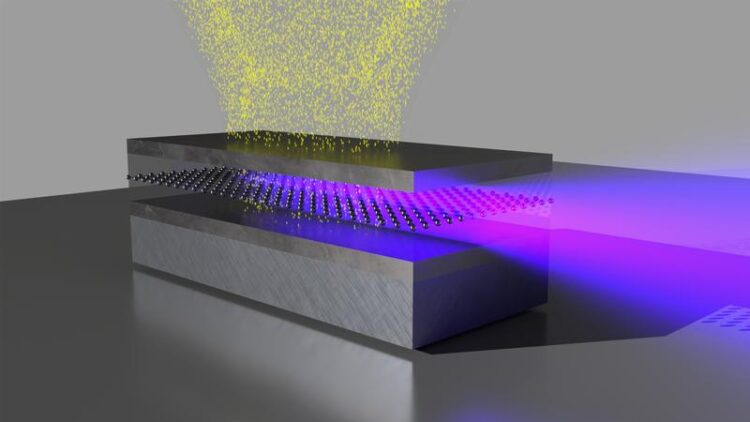X-rays are usually difficult to direct and guide. X-ray physicists at the University of Göttingen have developed a new method with which the X-rays can be emitted more precisely in one direction. To do this, the scientists use a structure of thin layers of materials with different densities of electrons to simultaneously deflect and focus the generated beams. The results of the study were published in the journal Science Advances.
To generate X-rays in ordinary X-ray tubes, electrons that have been accelerated by a high voltage, collide with a metal anode. The atoms in the metal deflect and slow down the electrons on their path, or the electrons excite the metal atoms to emit radiation as they bump into each other. Both the deceleration of the electrons and the excitation of the metal atoms result in X-ray radiation being emitted. Unfortunately, the radiation is emitted equally in all directions and is then difficult to direct into a focused beam. In addition, the wavefront of the emitted X-rays is completely random and disordered.
Physicists at the Institute for X-ray Physics at Göttingen University have now observed a novel effect when the anode is replaced by a suitable structure of thin layers of materials with different densities of electrons. The thickness of the “sandwich structure” must be a few millionths of a millimetre. If a particular sequence of layers is chosen, the X-rays can be guided. “When the accelerated electrons hit this sandwich structure, the angular spectrum of the generated X-rays changes,” says Malte Vassholz, first author of the paper. He goes on to say, “The X-rays are preferentially generated and directed parallel to the layers, which act as a waveguide, similar to an optical fibre.”
Detailed numerical calculations allow the results to be reproduced in a model and calculated for a given choice of structure. “According to our calculations, the effect could be further enhanced by optimising the structure. This would enable us to generate X-ray radiation with higher brilliance,” adds Professor Tim Salditt. The hope is that X-ray measurements, which have so far only been possible at large accelerators such as the electron synchrotron in Hamburg, can also be brought ‘into the laboratory’ to some extent. “Applications of X-ray imaging for microscopically small and low-contrast objects – such as soft biological tissues – are particularly interesting,” says Salditt.
###
Original publication: Malte Vassholz, Tim Salditt. Observation of electron-induced characteristic x-ray and bremsstrahlung radiation from a waveguide cavity. Science Advances (2021). Doi 10.1126/sciadv.abd5677
https:/
Contact:
Professor Tim Salditt
University of Göttingen
Institute for X-ray Physics
Friedrich-Hund-Platz 1, 37077 Göttingen
Tel: +49 (0)551 39 29918 / Secretary: +49 (0) 551 39 25556
Email: tsaldit@gwdg.de
http://www.







